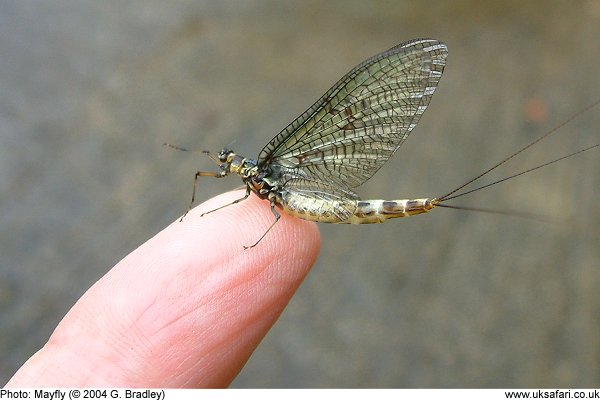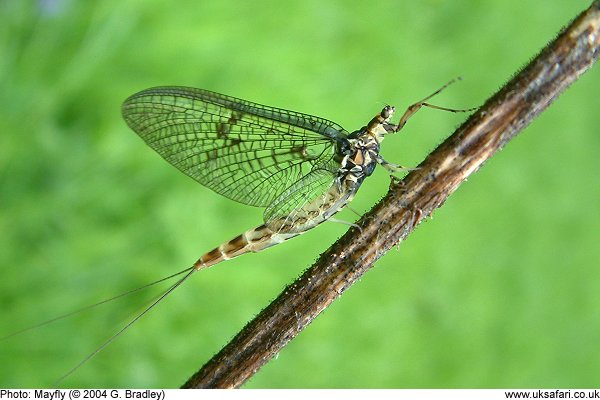 Quick Facts
Quick Facts
Scientific name: Ephemeroptera
Size: There are 51 species of mayfly in Britain, ranging in size from 5mm to 2cm from head to base of tail
Distribution: Found throughout the U.K.
Months seen: May to September
Habitat: Close to rivers, streams, ponds and lakes
Food: Adults don't feed, but the larvae eat aquatic plants and algae
Special features: Mayflies can be recognised by their short antennae, and either two or three long tail filaments. Their wings are held vertically over their backs when resting, and their hind wings are much smaller than the forewings.
The adult form of the mayfly, as seen in the photograph is very short lived. Mayflies used to be known as "Dayflies" because many of the species survive for just one day.
The eggs of mayflies are laid underwater, and the nymphs which hatch from the eggs live for two years in the water. On a warm sunny day, normally between May and July (hence the name) the nymphs emerge from the water, and the adult mayflies break out of their larval cases.
The adult flies quickly take to the air in a search for mates. Once mated, the males die. The females lay their eggs in the water and then they die too.
 Related Pages
Related Pages

 Popular Pages
Popular Pages
Amphibians, Bats, Badgers, Beetles, Birds, Birds of Prey, Bumble Bees, Butterflies, Caterpillars, Creepy-Crawlies, Deadly Spiders, Dolphins, Dragonflies, E-Postcards, False Widow Spiders, Free Newsletter, Frogs, Fungi, Garden Spiders, Glow-Worms, Grey Squirrels, Hedgehogs, House Spiders, Ladybirds, Mammals, Marine Mammals, Moths, Owls, Reptiles, Spiders, Toads, Trees, Wildlife Hospitals
© Copyright 2017 G. Bradley - UK Safari | About Us | Links | Contributors


 Mayflies
Mayflies



